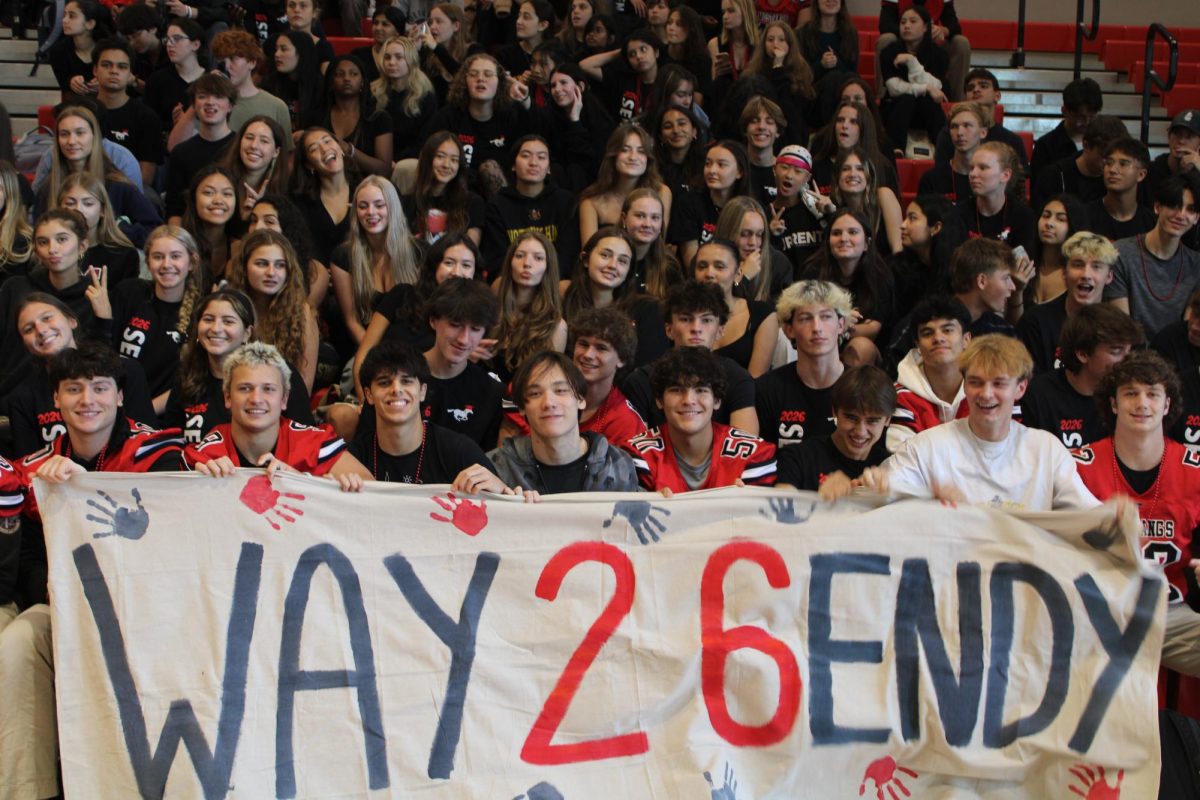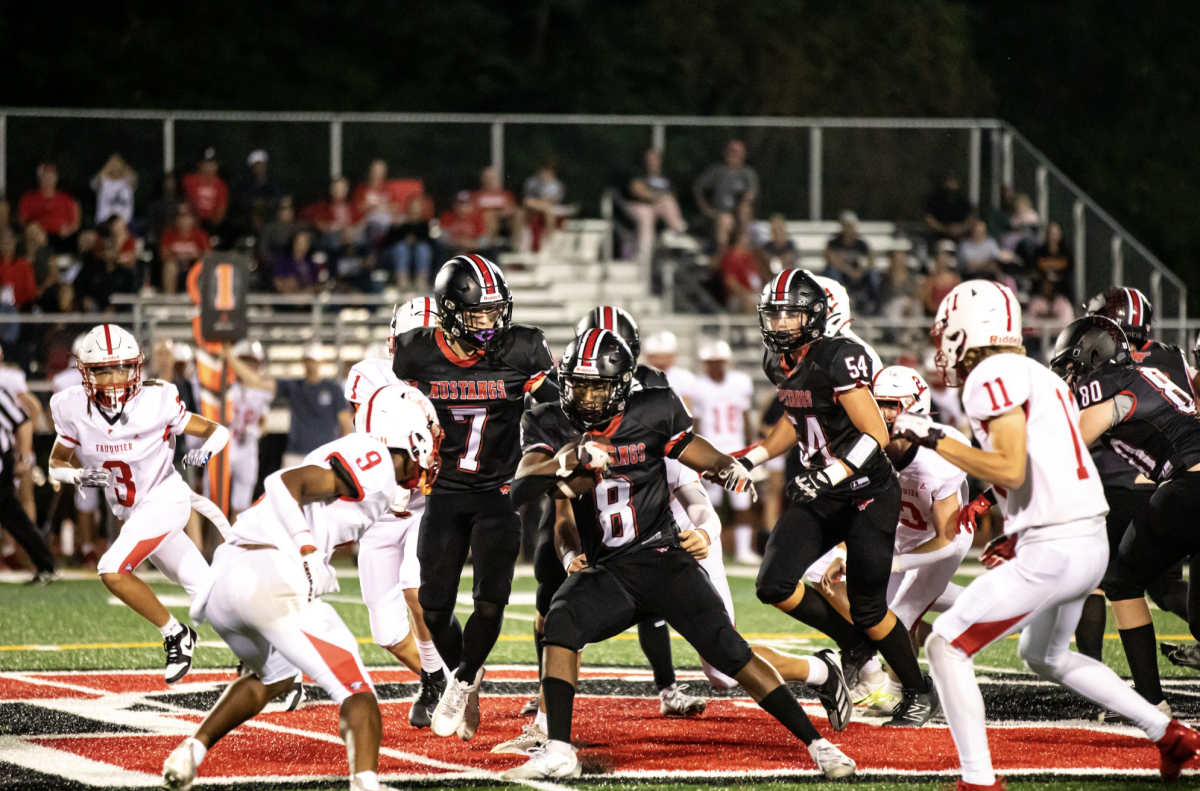
If you’re like most George Mason underclassmen, you’ve probably heard your teachers mention the Middle Years Programme. Newly initiated this year has, its different curriculum and teaching styles have already begun to change the average Mason classroom experience.
The Middle Years Programme, or MYP, as it is called, is an IB program that spans grades six to ten, and is designed to prepare students for the IB diploma.
While still focusing on S.O.L. standards, MYP provides a series of additional criteria that focuses on “conceptual and interdisciplinary learning,” said George Mason Vice Principal Kevin Clark.
The new classroom curriculum is designed to enforce these standards. Teachers are encouraged to focus on interdisciplinary learning, or to collaborate on units and bring concepts together.
The curriculum strives to “focus on big ideas rather than focusing on little things,” and to “really get kids thinking deeply about [the concepts]” while giving them the skills to “connect it and weave it through the curriculums,” said Clark. “Teachers are additionally working on including a global context, which is part of the IB (diploma) program itself.”
While the curriculum may be new, the introduction of MYP is not itself a new idea. The program was introduced to “a group of teachers and administrators and community members in 1998,” said Brown. “They’ve been exploring it since then.”
Initiation of the program was acted upon much more recently, though. Teachers and administration have been “working towards the implementation [of the MYP] for two years,” said Clark. Last year teachers began their planning, working not just on the curriculum but the new ways of student assessment required by the MYP.?
The criteria of the MYP curriculum and its assessments vary from what students are accustomed to. Each MYP class has four criteria (for example, the criteria for math includes knowledge and understand, along with communication,) and an MYP Assessment will test you on any number of them.
The tests will go beyond simply “show[ing] that you can do XYZ,” said Clark, using the communication criteria as an example. “You might have to explain [what you’ve learned] to somebody, maybe over a video, or find some way to communicate it.” Each of the four criteria from each class must be assessed twice over the course of the year.
Students will not be graded out of 100% or on a letter scale, but an eight point rubric, provided by the IB program. Their grade will then be converted into a number from one to seven, which is their final MYP score.?
Students’ MYP scores are not incorporated into a classroom grade, and will not count towards their GPA. Their purpose is for students to “understand where they are on the IB scale,” said Clark.
Still, some teachers may choose the option of including specific MYP Assessments in their students?? grades.In this case, a student’s MYP score on that assignment would be converted into the regular grade format. The student handbook carries a conversion chart on page 22 to assist in this situation.
Along with the assessments, sophomore students will be required to complete a personal project.
A personal project is a project where students “bring together their learning over the course of the MYP program,” and “represent it in a way that’s based on some kind of personal interest.” said Clark.
The class of 2020 will be the first sophomores required to complete personal projects. Mason has already began preparing for this, with the initiation of the Makerspace, intended to assist students in these projects.
The MYP additionally has a “focus in service action.” said Brown. “[It’s] the idea that our students aren’t living in isolation, and interact with different communities. Students will “start seeing more connection with what’s happening in the classrooms [and their communities.]”
This focus will help further the MYP goal of creating more “authentic real world global connections” and helping students “connect to where they are in a global context,” said Clark.
Though the MYP may be initiating many types of new work, students will be happy to know that this will not increase their workload.
It isn’t “more work, but [it’s] different work.” said Clark.
“It’s a different lens,” said Brown, “[I] don’t see it providing students any additional work.”
Above all, the MYP is “an opportunity [for students and teachers] to challenge themselves, and look at in instruction in a different light.” said Brown.
The new focus on interdisciplinary learning hopes to encourage the spirit of inquiry, and show students that “learning is not in subject boxes,” but that “it connects,” said Clark.
And although Mason is currently introducing the MYP, GM is still not an MYP authorized school. The authorization visit is scheduled for next fall. The IB Program will send a team to “walk around [Mason] and interview students, teachers, administrators,” said Clark. The team will then decide “if we’ll be authorized as an MYP school.”
The introduction of the MYP is a process, and “we’re all kinda learning about it together,” Clark said. “We still have a lot to do as a community.”
“It’s going to be a learning curve,” said Brown. “Anytime you start something new there’s going to be new growing pains.” Still, Brown does not “foresee it being a con for our students and teachers.” This challenge comes with an opportunity to “revisit and revise where we’re headed as a school,” she said.
Whether or not Mason ends up heading in the direction of MYP, the program will still “give students an opportunity to dig deeper and explore ideas,” and uniquely allow them to “show their understanding in ways other than paper and pencil.” said Clark. “The bottom line is that we think it’s gonna be a really great experience for kids.” he adds.








